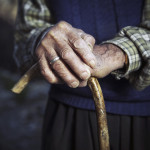Six months of moderate to high-intensity exercise led to more fat loss, both internal abdominal fat and fat under the skin, among older adults with HIV compared to peers without HIV. But older people with HIV gained less lean muscle mass—an important note, since muscle mass helps maintain strength and endurance, among other things.
These were the findings of a small study published in the Journal of Acquired Immune Deficiency Syndrome.
HIV itself and antiretrovirals (ARVs) used to treat the virus can have an impact on body composition. Some people experience weight gain after starting modern ARVs or switching to new meds. This can include gains in both visceral fat within the abdomen surrounding the internal organs—which can cause a hard belly—and soft subcutaneous fat under the skin, especially around the belly, thighs, hips and butt. Visceral fat is linked to more health risks, including heart disease and fatty liver disease.
People aging with HIV, especially long-term survivors who used older ARVs, may have experienced everything from wasting syndrome—a generalized loss of fat and lean muscle mass—to lipodystrophy, characterized by both an increase in hard-belly abdominal fat and a loss of subcutaneous fat in the face and limbs.
“The blunted increase in lean mass in [people with HIV] may be related to persistent mitochondrial dysfunction because of previous exposure to thymidine analogues or HIV infection,” wrote lead author Catherine Jankowski, PhD, of the University of Colorado, and colleagues.
One can still age healthfully with these conditions, of course. But the key is for all aging people to exercise in order to maintain strength and endurance as well as to ward off age-related injuries from falls.
In this study, researchers recruited 55 people ages 50 to 75 years old to participate in 12 weeks of moderate-intensity exercise and then 12 additional weeks of moderate or high-intensity follow-up.
Twenty-seven participants had been living with HIV for a median of 23 years, were engaged in care and had an undetectable viral load for more than two years. Two thirds of them (68%) had used HIV regimens containing thymidine analogues, such as AZT or d4T, 59% were currently on an integrase inhibitor and 4% currently took the new version of tenofovir (tenofovir alafenamide). In addition, the study included 28 HIV-negative control subjects. All participants reported less than an hour of exercise a week for six months before starting the trial.
People with HIV started the study with lower body mass in general, with significantly less fat tissue than their HIV-negative peers. However, there was no significant difference between the groups in lean tissue or visceral fat. Almost all the participants with HIV had lipodystrophy (26 out of 27), and 15 out of 27 had sarcopenia, an additional loss of muscle due to aging.
Participants with HIV were slightly younger (median age 56 versus 61), less likely to be white (70% white versus 89% white among the controls), slightly more likely to smoke and more likely to have other comorbidities.
All participants were asked to visit the study site three times a week to exercise. They gradually worked up to 50 minutes of jogging on a treadmill at moderate intensity and incorporated weight training with bench presses, leg presses and lateral pull-downs. Then, after the first 12 weeks, they were randomized to either continue with the same exercise program or switch to a higher-intensity exercise program.
The researchers found that after 24 weeks, both people with and without HIV saw favorable body composition changes and that these weren’t significantly different between the two groups. But they did find that HIV-negative people gained more lean muscle, while people with HIV lost more visceral fat and subcutaneous fat.
“Exercise recommendations for older [people living with HIV] may need to place greater emphasis on resistance exercise to increase muscle mass,” wrote the authors, “although improvements in physical function indicate improved muscle quality.”
Click here to read the full study.







Comments
Comments